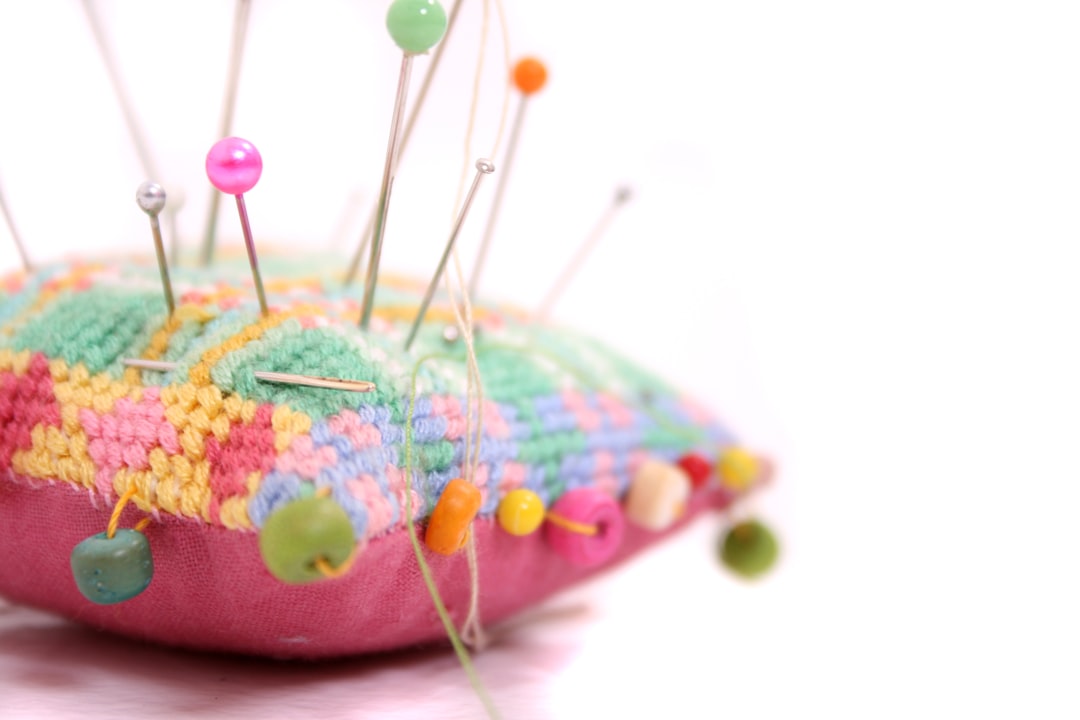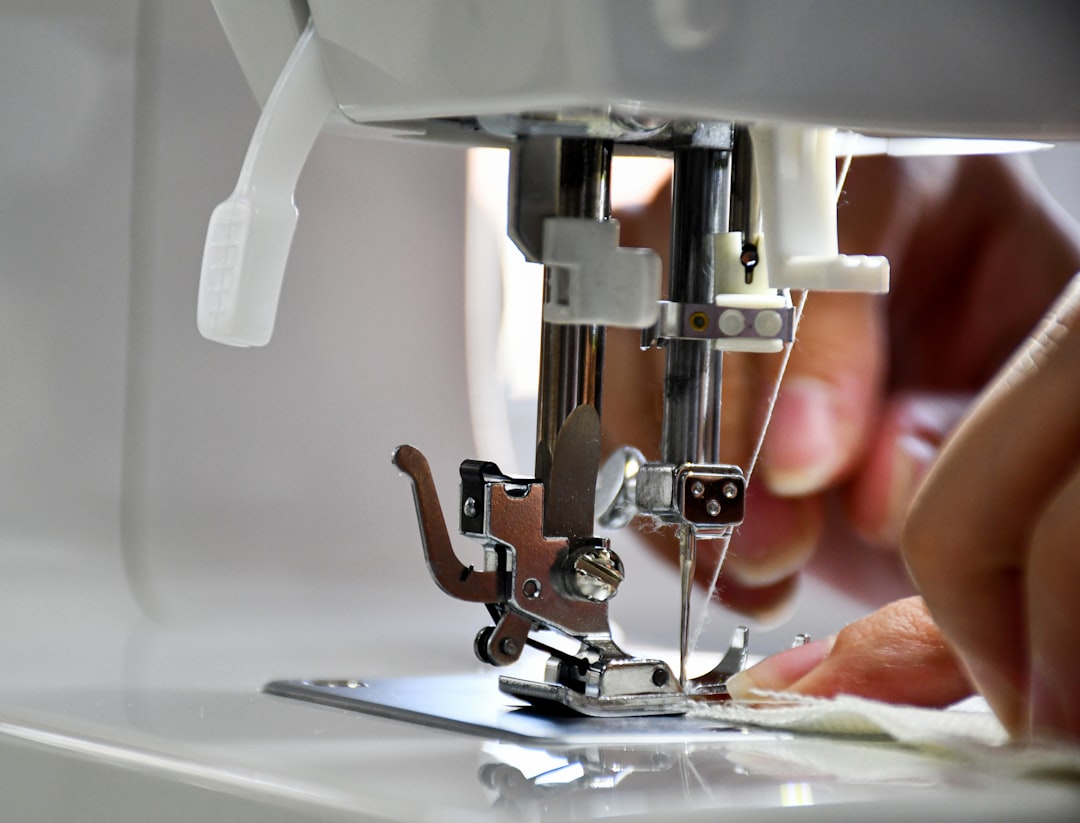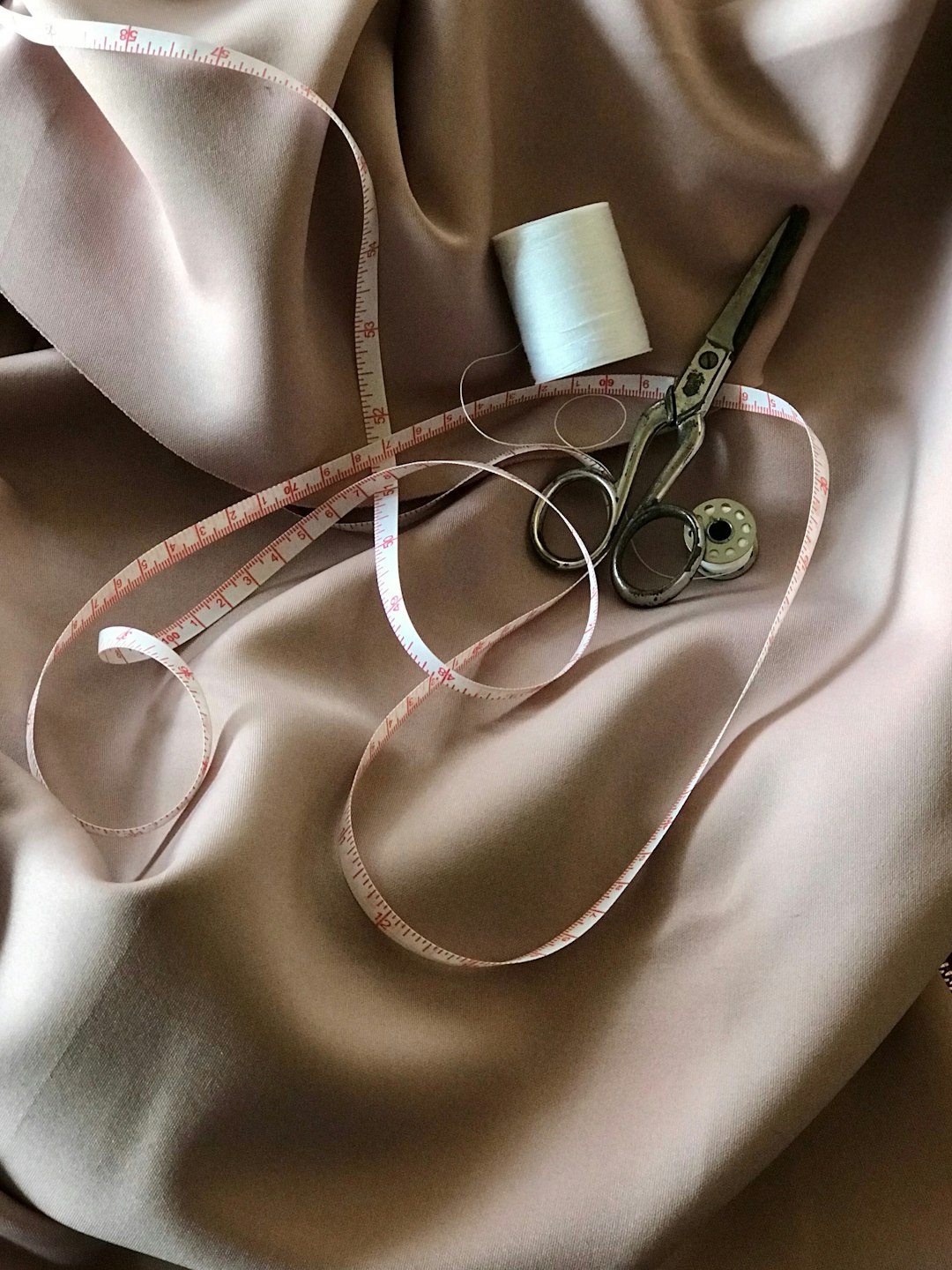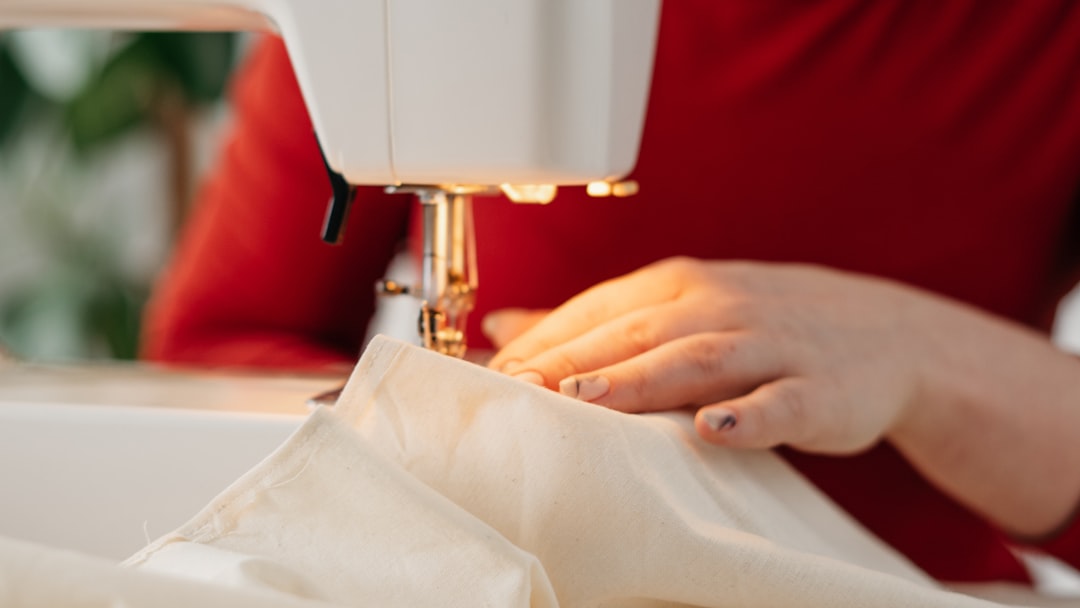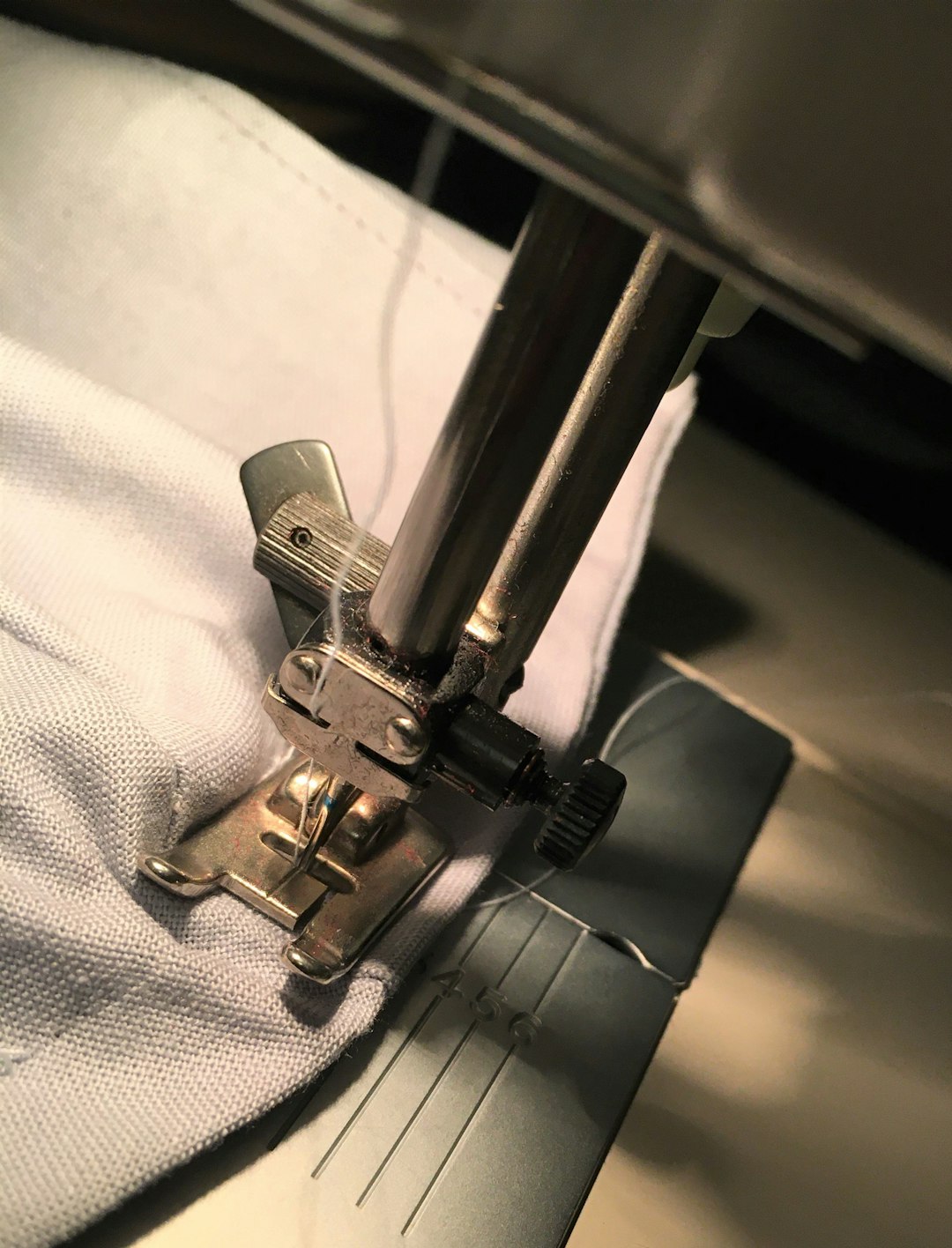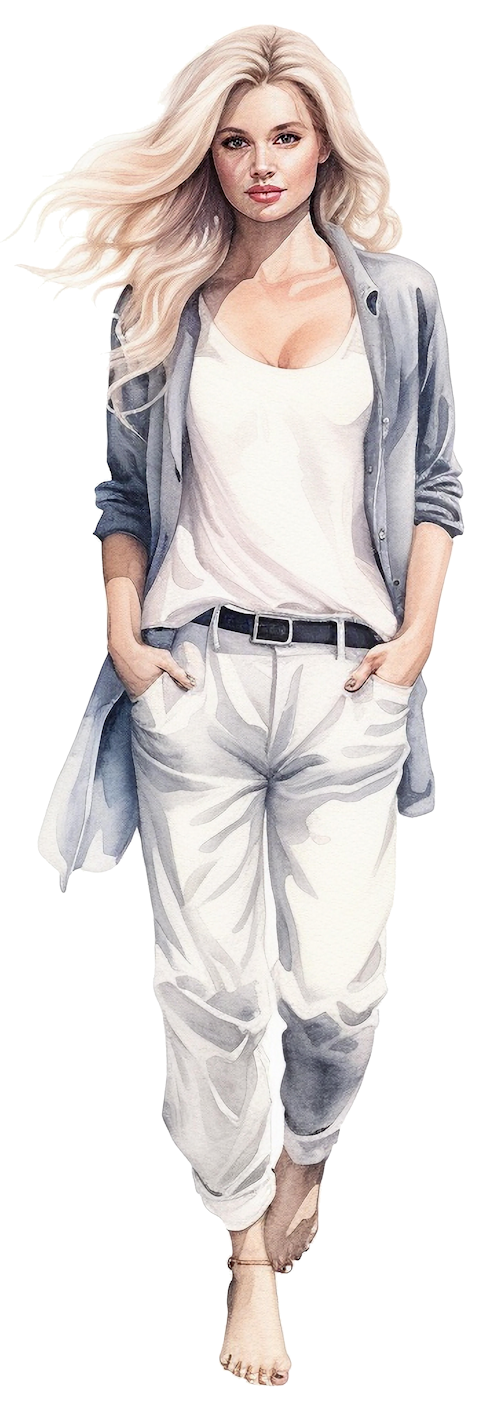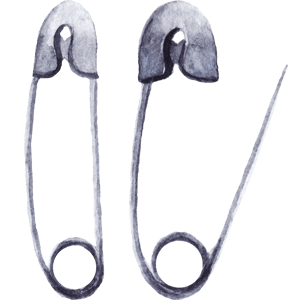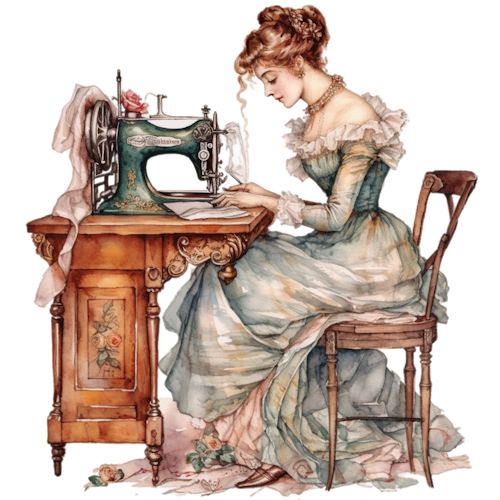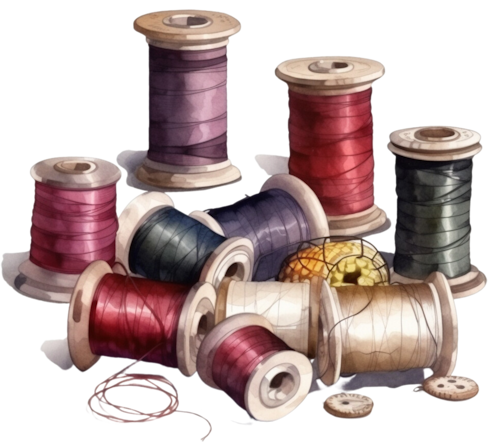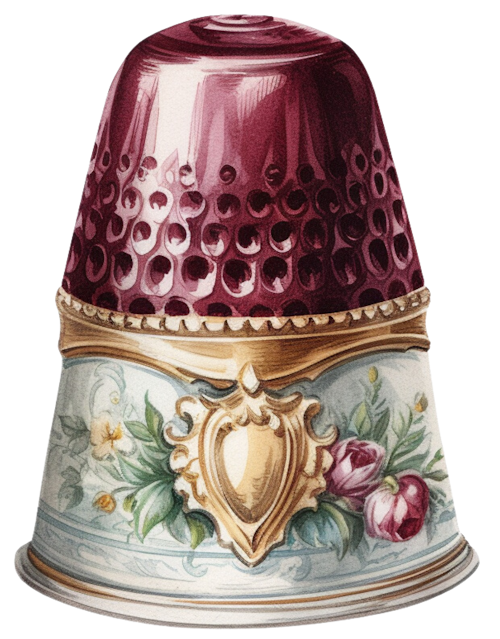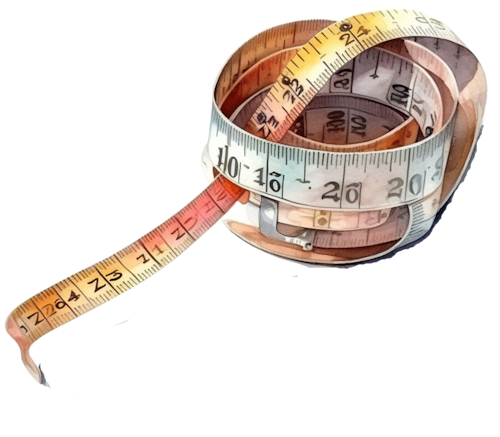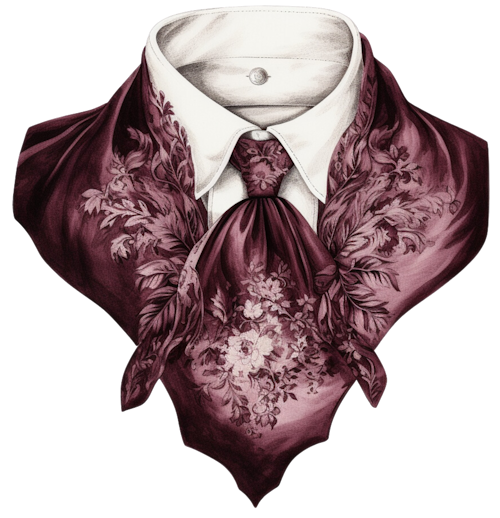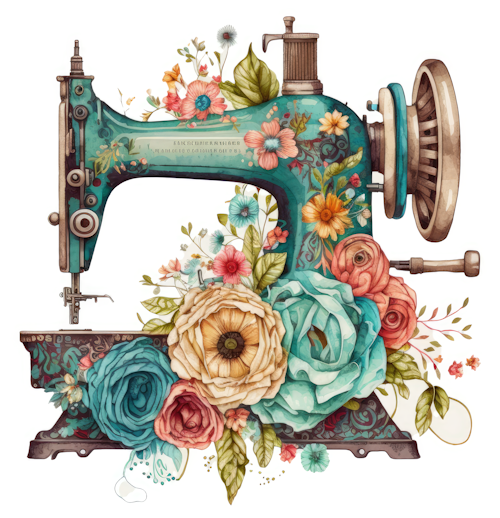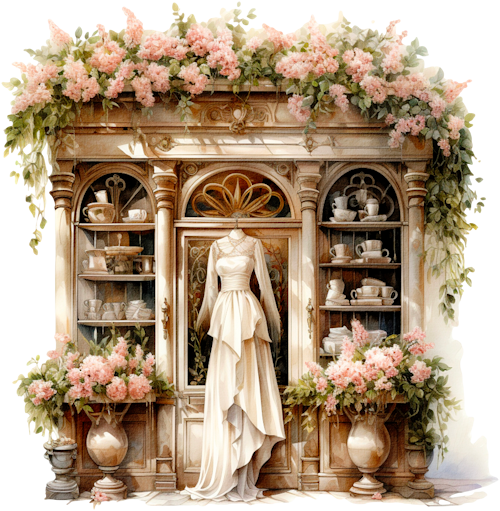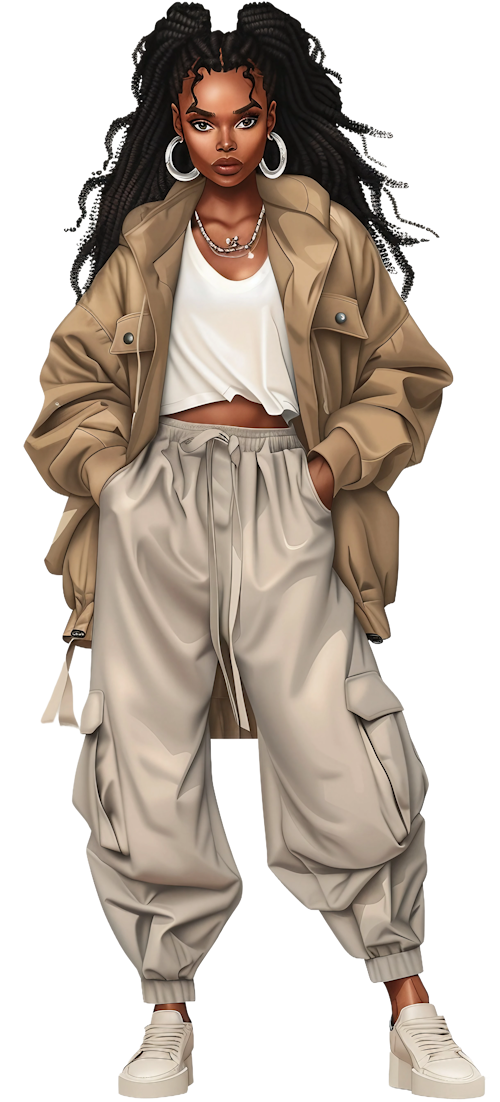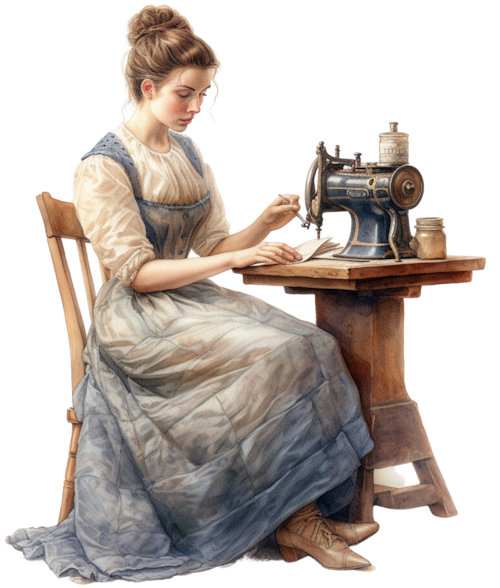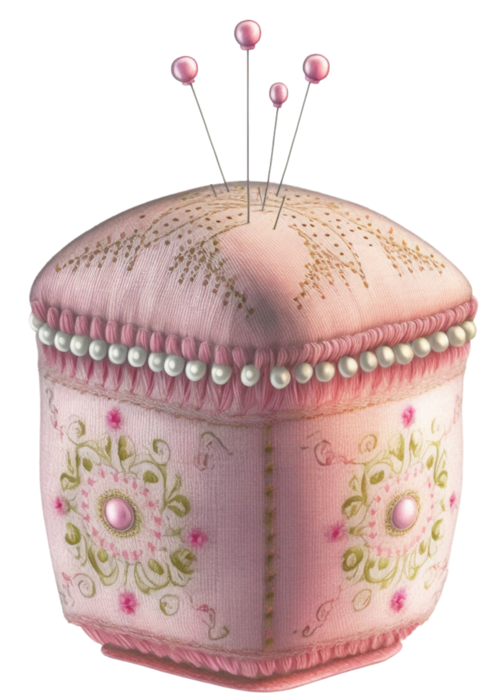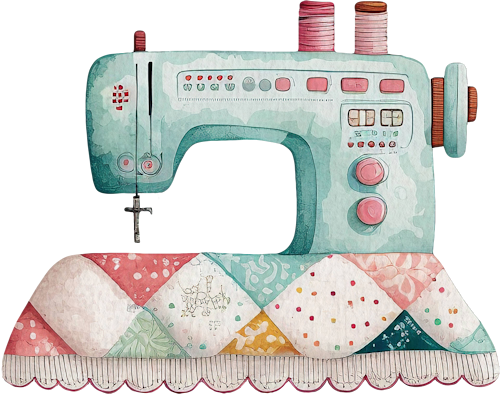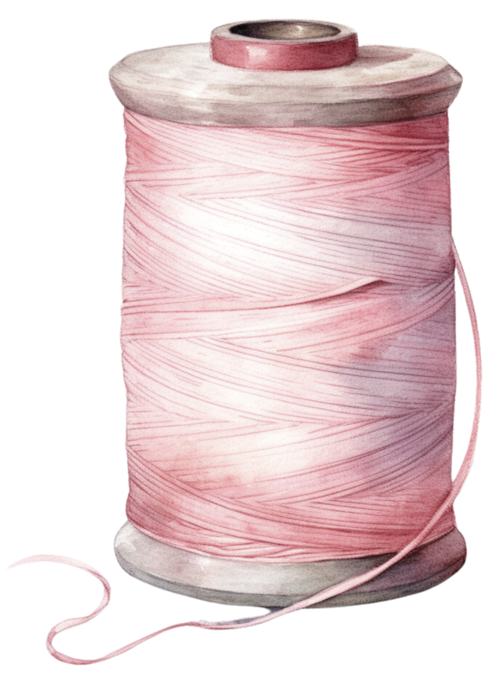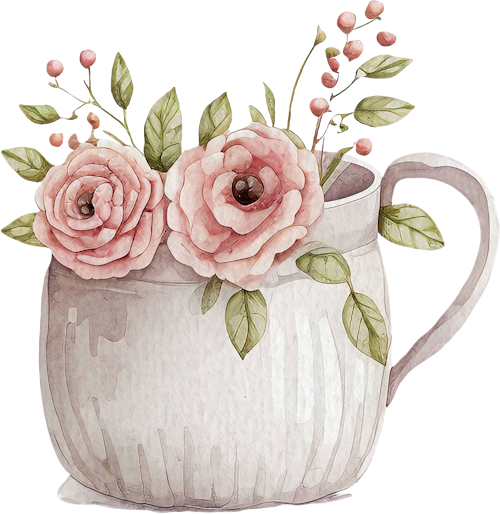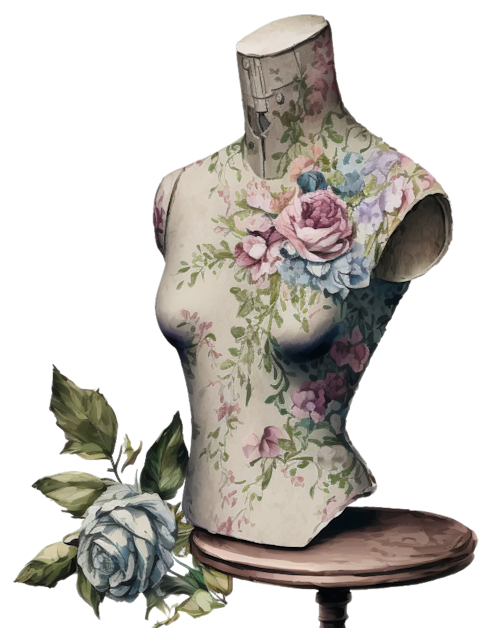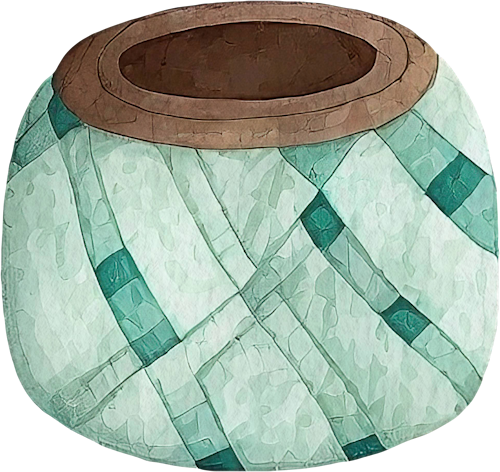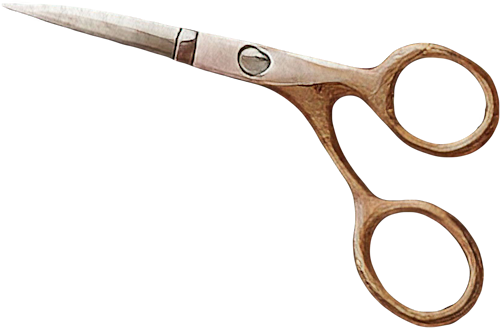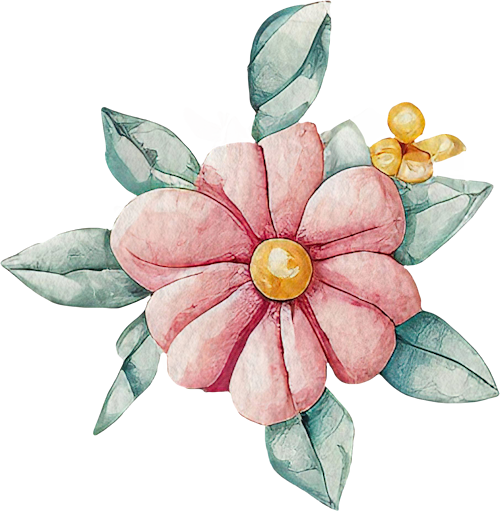Focused Skills, Strong Brands - A Guide to Niche vs General Sewing Services in Australia (Bridal, Alterations, Children's Wear & More
Aspiring sewing entrepreneurs in Australia - discover why focusing on a niche (bridal gowns, alterations, children's wear, etc.) can boost your business. Learn the advantages of specialisation vs general sewing, niche start-up costs (haberdashery, fabrics, machines), local supplier tips, pricing in AUD, and branding strategies to help your sewing business thrive.
The Power of Specialisation in Sewing

Turning your passion for sewing into a profitable business is exciting - but success often hinges on finding the right niche.
In Australia's vibrant DIY fashion scene, a specialised focus can truly make or break a sewing business. Why? Because in a competitive market, being a Jack-of-all-trades might spread you too thin, whereas being a go-to expert in one area can attract loyal customers who seek out your specific skills.
Whether you dream of sewing bespoke bridal gowns or hemming jeans in a busy alterations shop, choosing a niche helps define your brand and target market from the start.
Focusing on a particular sewing niche - be it bridal sewing, clothing alterations, children's wear, or any other specialty - allows you to hone your skills, invest in the right equipment , and market more effectively to your ideal clients. By contrast, offering general sewing services can make it harder to stand out.
Many successful Australian sewing entrepreneurs have found that niche specialisation gave them a competitive advantage and a clearer path to growth.
In fact, financial experts often advise creative businesses to narrow their focus early on; as one industry CPA noted, it's usually "Better to specialise until you get to about that half a million in annual sales" before broadening out.
In this article, we’ll explore the advantages of specialising vs. remaining a generalist, delve into specific niche options (from bridal and evening wear to repairs and alterations, casual/corporate/resort wear, and children’s wear), and outline what you need to start each one – including startup costs for machines, tools, fabrics and haberdashery.
We’ll also discuss sourcing materials from local Australian suppliers, potential challenges of each niche (and how to overcome them), as well as tips on realistic pricing, managing client expectations, and crafting a strong brand for your sewing business.
Let’s get started on finding the focused path that could set your sewing venture up for lasting success!
Why a Niche Beats Being a Generalist in the Sewing Business
Before diving into individual specialisations, let’s look at why choosing a niche is often smarter than offering general sewing services
Build Expertise and Reputation
Focusing on a niche allows you to become highly skilled in that area. You’ll finish more projects of a similar type, improving speed and quality.
Over time, you develop a reputation as the expert in that service – whether it’s the “bridal dressmaker who does flawless couture gowns” or the “alterations wizard for perfectly tailored suits.”
This expertise makes clients trust you more and refer others specifically seeking that service.
Less Competition, Clear Differentiation
In Australia, there are many general sewing and alteration services, so standing out can be tough.
A niche sets you apart. For example, instead of being one of dozens of generic sewing businesses, you could be the only one in your area specialising in custom dance costumes or eco-friendly children’s clothes.
Your marketing can highlight what makes you unique. Customers with that specific need will think of you first.
Premium Pricing Potential
Specialists can often charge higher rates because of their expertise and the tailored value they offer.
Clients are usually willing to pay more for someone who is known for delivering the exact service they need at a high quality level.
A general sewist might struggle to justify premium prices, but a bridal specialist or a bespoke tailor can command a higher fee for their depth of skill and niche experience. (For instance, brides routinely spend around $2,500 on a wedding dress in Australia, and custom gowns often range from $3,500 to $7,000 or more – figures that reflect the specialized work involved.)
Targeted Marketing & Branding
With a clear niche, every aspect of your branding and marketing becomes easier to tailor. You can identify your target market and reach them more directly.
For example, if you specialise in bridal sewing, you can network with wedding planners and bridal boutiques, use hashtags like #bridaldesigner, and showcase wedding dresses in your portfolio.
Compare that to a generalist who has to appeal to anyone and everyone needing any sewing work – their message ends up less focused. By honing in on a niche, you know exactly who your ideal customer is and can design your services, website, and social media content to speak directly to that audience.
Streamlined Operations
Specialising can also mean a more efficient workflow and inventory.
You can invest in the specific tools and supplies you’ll use most, rather than a little of everything.
Your work process becomes smoother with repetition and specialised equipment.
Additionally, you may deal with fewer types of materials – for instance, a swimwear maker mostly handles spandex and linings, whereas a generalist might need everything from denim to chiffon on hand.
Focusing narrows your material needs, potentially reducing costs and storage requirements.
Of course, being a specialist isn’t without drawbacks – you are focusing on a smaller segment of the market, and you’ll need enough demand in that niche to sustain your business.
However, you can mitigate this by choosing a niche that has a proven market (we’ll discuss Australian market context for each niche below) and by excelling in customer service so you retain and attract clients.
You can also start with one niche and expand later; many entrepreneurs find that mastering one area first is the key to building a solid foundation – once you’re established, you might add complementary services.
But initially, as one business mentor put it, “trying to do it all at once... may overwhelm” a new business.
Starting focused helps you learn your customers’ needs deeply and fine-tune your business model before broadening out.
Now, let’s explore some specific areas of specialisation common in the sewing industry, and see how each niche looks in terms of opportunities, startup requirements, and challenges in an Australian context.
Niche Options for Sewing Businesses in Australia
There are many directions you can take your sewing business. Here we’ll cover some popular specialisation areas and what to consider for each.
Repairs and Alterations Specialist
What it involves:
A repairs and alterations business focuses on modifying, mending, and tailoring existing garments.
Services can range from hemming pants, taking in or letting out seams, replacing zippers, patching holes, to refitting vintage clothing.
In Australia, there’s steady demand for quality clothing alteration services – people often need school uniforms adjusted, formal wear altered, or everyday clothes repaired rather than replaced.
This niche can provide a consistent income stream, since virtually everyone has something in their wardrobe that could fit better or needs fixing.
Advantages:
Alterations and repairs are a bread-and-butter niche – often considered recession-proof – because even when people aren’t buying new clothes, they still need their current clothes adjusted or mended.
You’ll likely get repeat customers (e.g. someone who trusts you with all their work suits or a family that brings you every torn school skirt).
Turnaround times are usually shorter than for custom sewing projects, so you can complete more jobs in a week.
Also, startup costs can be relatively low compared to other niches, since you’re working with existing garments (no need to buy lots of fabric upfront).
It’s a great way to utilise your sewing skills daily without the complex design work of creating from scratch.
Startup Costs & Essentials:
To start an alterations business, invest in a durable, multi-functional sewing machine that can handle a variety of fabrics – from delicate silks to heavy denim.
A good quality domestic machine might cost anywhere from $500 to $1,500 AUD for a heavy-duty model, or you might even consider an industrial straight-stitch machine (these sew fast and handle thick materials well, often priced around $2,000-$3,000+ new).
An overlocker (serger) is highly recommended for finishing seams neatly, especially on knits; basic overlockers start around $300 and go up to $1,000+.
You’ll also need a well-stocked haberdashery kit: an array of thread colours (so you can match any garment you’re working on), assorted sizes of needles (for machine and hand sewing, to tackle everything from denim to chiffon), scissors and snips, a seam ripper (your best friend for altering seams), measuring tapes, tailors’ chalk/markers, straight pins, and replacement notions (like zippers, buttons, hooks & eyes).
Stocking a variety of common zipper lengths and colours, basic buttons, and elastic will save you trips to the store mid-project – budget perhaps a few hundred dollars to build up this supply.
An ironing station is a must for professional results (pressing seams, hems, etc.), so get a reliable iron (or even a small steam press) and a sturdy ironing board (together around $150-$300).
Optionally, a blind hemmer machine or blind hem foot can be useful for trousers and skirts hems, though not mandatory at startup.
Consider a dress form if you’ll be doing a lot of dress or suit alterations – an adjustable dressmaker’s mannequin (approximately $200-$400) helps with pinning and checking fit.
Supplier considerations:
For an alterations niche, you’ll mainly need notions and thread. These are easily sourced from large Australian fabric stores like Spotlight or Lincraft, which carry a wide range of Gütermann threads, YKK zippers, buttons, interfacings and more. You can buy in bulk online or in-store.
Having a relationship with your local Spotlight might be handy – they often have sales on thread and notions where you can stock up.
For specialized needs (e.g. a unique button or a heavy-duty jeans zipper), you might turn to smaller suppliers or online shops like The Remnant Warehouse (Sydney-based, also online) or other local haberdashery specialists.
Because alterations don’t typically require lots of fabric yardage, you can even use fabric scraps or offcuts for patches and pocket repairs; consider reaching out to local tailoring shops or designers to see if you can take some offcuts off their hands.
Supporting small Aussie suppliers for fabrics/notions can give you quality and a point of difference – as one expert noted, “finding a supplier keen to work with you and see your business grow is important”.
Pricing & client expectations:
Clients seeking alterations often expect quick service and reasonable prices – many view alterations as a small expense (compared to say, buying a new garment).
It’s important to price your time realistically. For example, hemming a pair of pants might be priced around $20-$30 AUD, taking in a dress could be $50-$100+, and bridal gown alterations could run a few hundred dollars depending on complexity.
Research what local alteration shops charge to set a baseline.
Be ready to explain your pricing if needed by highlighting the skill and time involved (“This isn’t just a quick stitch – I’ll be reworking the lining and invisible zip, which takes careful work”).
Setting clear expectations is key; let clients know typical turnaround times (e.g. 3-7 days for standard alterations, longer during peak seasons like before school formals or holidays).
Branding for an alterations business can emphasize reliability, convenience, and expertise. For example, you might choose a business name like “Quick Stitch Alterations” or “Perth Perfect Fit” to instantly convey your service.
If you operate from a home studio, make sure you provide a professional experience – a clean fitting area, good communication – so clients see you as on par with a retail shop.
Word-of-mouth is powerful in this niche, so every happy customer can bring in five more.
In Perth, one young entrepreneur started an alterations shop at age 24 and built a loyal following over the years by offering modern styling advice and personable service. Her business, still thriving 30 years on, shows that a specialty in alterations can indeed be a long-term success with the right approach.
Challenges & tips:
The alterations niche can be physically demanding – lots of hours hunched over a machine or fitting clients. Invest in an ergonomic chair and take breaks to stretch.
During busy periods (e.g. before school balls, weddings, Christmas), you might be flooded with requests; manage this by scheduling wisely or even hiring part-time help if needed (perhaps a fashion student looking for experience).
Another challenge is dealing with customers’ emotional attachment to their clothes – you’ll encounter bridal gowns that cannot be messed up, or clients anxious about cutting into expensive suits.
Honing your communication skills will help reassure clients and clarify what’s possible.
Occasionally, you may have to turn down a job if it’s beyond your comfort zone (for instance, major resizing that is practically a remake) – better to say no than to have an unhappy customer.
Finally, keep learning tailoring techniques; the more alterations tricks you know (like easing in a sleeve or altering a garment’s shoulder), the more kinds of jobs you can confidently tackle.
Bridal and Evening Wear Specialist
What it involves:
Specialising in bridal and evening wear means you’ll be designing and/or sewing glamorous outfits for life’s big events – think wedding gowns, bridesmaid dresses, mother-of-the-bride outfits, school formal (prom) dresses, gala evening gowns, and perhaps fancy cocktail dresses.
This niche is all about custom, couture-quality sewing with luxurious fabrics and elaborate designs.
Clients are often brides or individuals looking for one-of-a-kind attire that fits them perfectly and reflects their style.
The work in this area can range from creating a completely custom wedding dress from sketch to final fitting, to doing significant alterations on store-bought bridal gowns (some bridal specialists offer both custom creation and alterations services).
It can also include making bridal accessories (veils, fabric belts, etc.) or evening wraps to complement gowns.
Advantages:
Bridal/evening wear is a high-value niche. Each project typically commands a high price, because of the complexity and importance of the garment.
Australian brides are prepared to invest in their dream dress – the average spend on a wedding dress is about $2,500 (including off-the-rack and custom), and many custom-made wedding dresses fall in the $3,500–$7,000 range for mid-level designers, with luxury bespoke gowns reaching $10k and beyond.
This means if you establish yourself in this niche, you can potentially earn more per project than with everyday clothing.
Moreover, it’s creatively fulfilling for those who love intricate sewing and design work – you get to work with gorgeous fabrics like silks, laces, and beaded tulles, and really push your sewing skills to couture levels.
A big plus: referrals are common in this niche. Do a great job on one bride’s gown, and you may get calls from her engaged friends or from guests who admired your work.
Over time, you can build a strong reputation via word-of-mouth among bridal circles or event communities.
There’s also a clear emotional reward – you’re helping make someone’s special day outfit perfect, which can be very gratifying (happy tears at a final fitting are not uncommon!).
Startup Costs & Essentials:
The bridal and formal niche likely requires the highest startup investment in equipment and materials, but it can be scaled depending on whether you start with alterations or full custom creations.
At minimum, you need an excellent quality sewing machine that handles delicate fabrics with precision. Look for features like adjustable presser foot pressure (for chiffons vs. thick layers), a variety of stitches (especially zigzag and buttonhole), and reliability for long seams.
A good computerized domestic machine from a brand like Janome, Brother, or Bernina in the $1,000-$2,000 range can suffice for starting out.
Some bridal sewists eventually invest in an industrial walking-foot machine or a high-end straight stitch for perfectly even seams on slippery fabrics, but you can add that once you have steady orders.
An overlocker is crucial for finishing raw edges of silks and linings neatly; expect ~$500-$800 for a mid-range model that handles fine materials well (some prefer 3-thread narrow overlock for minimal bulk on bridal fabrics).
You might also invest in a coverstitch machine if you plan to sew a lot of stretch evening gowns (to hem knits cleanly), though this might be optional at first.
In terms of tools:
Fine hand-sewing needles, beading needles, and a variety of thread types (silk thread for hand-appliqué, cotton-covered polyester for machine stitching, etc.) will be in constant use.
You’ll need specialty presser feet (a Teflon foot for slippery satin, a beading foot if attaching strings of beads or pearls, a rolled hem foot for chiffon hems, etc.).
Good lighting is essential for working on white/ivory fabrics – invest in a bright task lamp.
A large cutting table is very helpful (bridal gowns are huge!), but if you don’t have space, at least have a cutting mat you can lay on the floor or a temporary table.
Expect to spend a fair bit on initial fabric and trim inventory: while many custom dressmakers order fabrics per project (often involving the client in choosing and purchasing), it’s wise to have sample books or swatches of common materials (silk satins, chiffons, laces) which you can get from fabric suppliers.
You may also keep a small stock of practice or lining fabrics to mock-up dresses (muslin/calico for test gowns, lining materials).
Don’t forget interfacing, boning, and other structural materials – for bridal wear, you’ll likely use sew-in interfacing for bodices, spiral steel or plastic boning for corset style tops, bra cups, horsehair braid for hemming tulle layers, etc. These specialty items can add up, so maybe allocate a few hundred dollars for an initial supply.
And of course, decorative trims: lace appliqués, beads, crystals, buttons or clasps for bridal gowns, special zippers (some wedding dresses use sturdy zips or delicate loops for corset backs). You might buy these per project, but having some beautiful appliqué lace pieces or rhinestone trims on hand can inspire designs.
An industrial steam iron or a decent garment steamer is highly recommended – bridal fabrics often crease and must be pressed carefully; a steamer (~$200) helps with final touch-ups on a hanging gown.
Supplier considerations:
Sourcing fabrics and trims is a critical part of a bridal/evening niche.
Australian businesses can tap into both local and international suppliers.
The upside of local sourcing is faster delivery and the ability to see materials in person.
Major cities have specialty fabric stores: for example, Sydney’s bridal fabric shops (in the CBD or suburbs like Surrey Hills) offer silks and French laces; Melbourne has stores like d’Italia (Malvern) known for couture fabrics; Tessuti Fabrics (in Sydney, Melbourne and online) carries high-end silks, lace, and Italian textiles suitable for evening wear.
There’s also Bridal Fabrics Australia (an online supplier dedicated to wedding fabrics) and wholesalers that import fabrics.
You might form relationships with a supplier to get materials at a trade price.
Keep in mind, some luxury fabrics are expensive – fine imported lace or silk can cost $50–$100+ per meter.
You don’t necessarily need to stockpile these, but know where to get them when you need them.
Trims like Swarovski crystals or quality beads can be found through specialty bead shops or ordered online.
Another consideration is working with the client’s budget: some brides will provide their own fabric or have a particular source (for instance, buying silk in bulk from a known retailer).
Be flexible – as the expert, you can guide them to good sources or work with what they bring.
Don’t forget to factor fabric costs into your quotes clearly if you’re supplying them, so the client understands the material expense versus your labour.
Also, remember to get small notions locally – even an all-white wedding dress needs things like thread, hidden zippers, hooks, etc., which you can get from Spotlight or a local craft store if needed quickly.
Pricing & client expectations:
Clients in the bridal and evening sector come with high expectations (rightly so, given the importance of the occasion). They expect superb quality, attention to detail, and a personalized experience.
Pricing your work here must reflect the hours (often dozens if not 100+ hours for a custom wedding gown) and the skill required.
It’s common to charge a premium for bridal services – for example, alterations on a bridal gown might easily run $300-$600 AUD for extensive adjustments, and creation of a custom wedding dress could be anywhere from $1,500 (for a simple design with inexpensive fabric) to $5,000-$10,000+ for elaborate couture designs including expensive fabrics and hand detailing.
Research what bridal dressmakers in your region charge. Be prepared to justify your pricing by explaining the process: “This gown will involve multiple fittings, hand-beading lace appliqués, and constructing an internal corset for support – it’s a labour-intensive creation.”
Clients will appreciate the transparency and many will understand the “you get what you pay for” principle when it comes to once-in-a-lifetime attire.
Managing timelines:
Managing timelines is crucial – bridal clients often come to you many months in advance.
You’ll need to schedule out design consultations, fittings (usually 3+ fittings for custom dresses), and final adjustments.
Clear communication is key: set milestone dates (e.g. muslin fit by X date, final fitting by Y date).
It’s wise to pad your timeline a bit to account for unexpected delays (fabric shipping delays, client’s body measurements changing, etc.).
Always get a deposit (especially for custom work) to cover materials and commit the client.
Branding & marketing:
This niche benefits hugely from a strong brand image. You’ll want a portfolio of your work – even if you’re new, consider making a sample gown or two (perhaps your own gown or a friend’s) to photograph on a model.
A professional-looking website or Instagram page with beautiful photos is your shopfront. Use SEO keywords on your site like “bridal sewing Australia”, “custom wedding dress Perth”, “bridal alterations [Your City]” to help local brides find you.
Align your brand aesthetic with your target market: for instance, if you aim for modern, minimalist bridal designs, let your logo, website design, and even the name reflect that vibe (clean, contemporary, maybe a sleek one-word business name).
If you’re all about princess gowns and traditional romance, go for a more elegant, flowy brand presentation.
In Australia, networking with the wedding industry helps – consider partnering with a local bridal boutique (some boutiques showcase local designers or refer custom requests they can’t fulfil), attending bridal fairs, or listing on bridal directories like Easy Weddings.
Word of mouth is golden: one delighted bride can send you three new clients.
Ensure each client feels special – small touches like a thank-you card, or a commemorative photo of them in the dress (with permission to share on your social media) can enhance the experience.
Also, emphasise any unique selling points: for example, if your gowns are Australian-made with locally sourced fabrics, highlight that – many customers love a sustainable, local angle.
Custom sewing can indeed be more sustainable than mass production, as one bridal blog notes: a custom dress is created thoughtfully with only needed materials, unlike mass-produced gowns which can create excess waste.
Such points can form part of your brand story.
Challenges & tips:
Working in bridal can be high-pressure. Clients may be emotionally charged (weddings are a big deal!), and “bridezilla” situations do happen.
Patience and professionalism are your best tools.
Always have a written agreement on the scope of work to avoid scope creep (e.g. bride changing the design drastically mid-way – have a policy on how that’s handled, likely with additional cost).
Another challenge is fitting – bridal wear often has very structured fits; if you’re not experienced in advanced dressmaking, consider taking courses in bridal couture or apprenticing with an established bridal tailor to gain skills.
Perfectionism is generally a good trait here, but watch out for analysis paralysis – know when the dress is “finished” and looking amazing, and avoid overworking it to death.
Also, seasonality: bridal inquiries may peak after the holiday engagement season and in the lead-up to spring/summer weddings.
There might be quieter months where you can focus on marketing or making sample dresses.
Financially, remember that while each project brings a big payment, the sporadic nature means budgeting is key – deposits help with cash flow.
Finally, cherish the positives: few things are as rewarding as seeing a client glow in a garment you crafted just for them. Those moments are what make this niche worth it.
Casual, Corporate, and Resort Wear Designer
What it involves:
This is a broader category encompassing everyday apparel or a fashion line.
You could choose a sub-niche within it – for example, casual wear (comfortable everyday clothing, streetwear, loungewear), corporate attire (office-wear like suits, blouses, tailored pants, uniforms), or resort wear (summery dresses, beach cover-ups, cruise wear).
Many Australian sewing entrepreneurs in this space essentially act as small-scale fashion designers or bespoke clothiers.
You might create a small clothing label featuring your original designs, or offer made-to-measure services for individual clients who want unique clothes beyond the standard sizes/styles in stores.
Resort wear is particularly relevant in Australia’s climate and culture – think of flowy linen pants, sundresses, or chic holiday outfits that appeal to those heading to our beautiful beaches or resorts.
Corporate wear could involve custom tailoring for professionals (e.g. women who want better-fitted work dresses, or men who need shirts that fit properly), or designing a line of mix-and-match office basics.
Casual wear might overlap with street fashion or even sustainable/ethical fashion if you go that route (using organic fabrics, etc.). This niche is somewhat the middle ground between high-end and everyday – you can infuse creativity and personal style into garments people will wear on a regular basis.
Advantages:
The freedom to express your design style is a big plus here.
Unlike bridal (which is event-specific) or alterations (working on existing clothes), creating casual/corporate/resort wear lets you set trends and build a brand style.
The Australian market appreciates independent fashion labels – there’s a growing appetite for local, ethically made clothing as an alternative to mass retail.
If you tap into a particular aesthetic that resonates (say, minimalist linen clothing for hot climates, or bold printed shirts for office wear with personality), you could develop a loyal following.
Another advantage is the potential for repeat customers and stable sales if you produce ready-to-wear items. For instance, if you sell online or at local markets, someone who loves your summer dress might come back next season for a new piece.
If you operate via custom orders, a satisfied client might order multiple garments or refer friends.
Compared to one-off event pieces, casual/corporate wear can have a more constant demand cycle.
Also, startup can be gradual: you might begin with a few designs and scale up production as orders come in (you can even sew each piece yourself to start, then outsource sewing if you get large orders).
In resort wear, especially, Australian designers often find a niche exporting or selling to tourists; a unique beachwear line could attract buyers from overseas markets too.
Startup Costs & Essentials:
Starting a clothing line or bespoke service means balancing design, production, and sales.
On the equipment side, a versatile sewing machine that can handle various garment types is key (much like the alterations setup). If you plan to sew light cottons, knits, and maybe the occasional suiting, ensure your machine has stretch stitch capability and can make automatic buttonholes for shirts or trousers. A price range of $700-$1500 AUD for a decent machine is reasonable.
An overlocker is almost mandatory if you’re making finished clothing to sell – consumers expect clean, durable seam finishes similar to store-bought clothes.
For knit garments or active/resort wear, a coverstitch machine will give you professional hem finishes (e.g. on t-shirts or swimwear), but you might manage with a twin-needle on your regular machine initially (twin-needle can simulate a coverstitch).
Another cost to consider is patternmaking. You’ll need patterns for each design – you can draft them yourself (pencil, pattern paper, French curves, etc. – minimal cost) but it’s time-intensive.
Some entrepreneurs start with commercial patterns as a base (ensuring you have rights if selling, or using indie patterns that allow small-scale selling) and then tweak them.
Others hire freelance pattern makers to create digital patterns/graded sizes if they plan to produce standardized sizes.
If you’re doing made-to-measure, you might create a custom pattern for each client – that’s more labour per garment, but yields a perfect fit.
Your initial material stock depends on your approach: For a clothing line, you’d source fabric in bulk (rolls of fabric) for consistency across your pieces. For bespoke one-offs, you might buy fabric per client or hold a selection of sample fabrics for them to choose from.
Either way, budgeting for fabric is critical. Fabrics vary widely in cost: good quality linen might be $20-30/meter, cotton jersey $15/meter, wool suiting $50/meter, etc.
If you’re making a batch of 10 dresses, and each needs 2m of fabric, that’s 20m of fabric – costs add up, so plan accordingly.
It’s wise not to over-invest in one fabric until you know it will sell or be used. You can start by purchasing smaller quantities to make samples and only buy larger amounts when you have orders.
Don’t forget notions: different types of garments need different haberdashery items. Shirts and dresses need buttons (button packs or bulk buys), zippers of various lengths (invisible zips for dresses, standard zips for skirts or pants), elastic for waistbands, interfacing for collars or facings, etc. Having a range of these on hand is helpful.
Also, consider branding elements like labels for your clothing line – you can order custom woven labels or care labels (for Australian compliance, any clothing sold should have care instructions labels and fibre content, see ACCC guidelines). The Care Labelling Australia standard means you must attach proper care labels to garments you sell, and for kids’ clothing, there are additional safety labelling requirements (like fire hazard labels on kids’ sleepwear). So factor in the cost of getting labels printed (the Dutch Label Shop and Wunderlabel are examples of companies where you can order these).
If focusing on corporate wear, you might need some tailoring tools: a tailor’s ham and sleeve roll for pressing curves, possibly a sleeve board, and good pressing equipment to give garments a crisp, professional finish. A quality iron and maybe a tailors’ clapper for sharp seams in suits will be important (wrinkled seams won’t impress a corporate client!).
Supplier considerations:
The range of materials in this niche is broad, so likely you’ll have multiple suppliers.
For casual and resort wear fabrics, Australia has some great options: Spotlight and Lincraft for basics (cottons, linens, knits), but also look into wholesalers or specialty stores for higher-end material or bulk buying.
For example, Nerida Hansen Fabrics (an Australian designer fabric supplier) offers trendy prints on cottons and knits and sells wholesale to small businesses.
Super Cheap Fabrics (despite the name, a reputable Melbourne-based store with online sales) has affordable fabric options and often bulk deals.
If sustainability is your angle, consider suppliers of organic fabrics or deadstock materials (deadstock = surplus fabric from mills, which is eco-friendly to use) – there are Aussie vendors specializing in that too.
For corporate fabrics (wools, suitings, shirting cottons), you might reach out to wholesalers like Wall Fabrics or check if any local textile mills supply tailors.
Buttons and trims for shirts or suits can be sourced from haberdashery wholesalers (some in Australia or you may import if needed).
The key is reliability and consistency: if you plan a range of products, ensure your supplier can provide the same fabric or trim again if your product takes off. It’s also smart to have backup suppliers for critical items.
One interesting resource: if you aim to produce more than you can sew yourself, Australia has small manufacturing units. But since we’re focusing on starting small, you might be sewing all items initially. However, be aware that as you grow, you could outsource production while you focus on design and business management.
Pricing & client expectations:
Pricing in this niche depends on your model. If you’re selling finished pieces (like at markets or online), you’ll need to calculate a price that covers your materials and time and has a profit margin. This can be tricky because handmade clothing often ends up with a higher price than mass retail.
Don’t undervalue your work – know your numbers (materials + labour + overheads) and set a fair price. As one Australian sewing business guide points out, “Don’t undervalue your skills... If people are not willing to pay your worth, then they are not your target audience and should be shopping at a cheap mass production shop”. In other words, you’re not competing with Kmart or Zara on price – you’re offering something different (custom fit, unique design, ethical production, etc.) that justifies a higher price. Still, you must align with your target market: figure out what they’d reasonably pay for a custom shirt or a handmade dress.
For bespoke corporate wear, clients might compare your prices to a high-end off-the-rack plus alteration cost, or to a tailor. For example, a custom women’s blazer might be priced a few hundred dollars (fabric plus tailoring), which could be comparable to buying a designer blazer. Be transparent that they’re getting a garment made just for them.
If you specialize in, say, plus-size corporate clothing, you’re solving a problem (limited options in stores), which clients may happily pay for, for clothes that fit perfectly.
Client expectations will vary: a casualwear customer buying at a market might just care that the item is cool and well-made; a bespoke client will expect personal service, fitting sessions, and choice of fabrics.
Outline your process clearly for custom orders (consultation, fittings, how long it takes).
For ready-made clothing line customers, provide accurate sizing charts and good customer service regarding queries or returns.
Branding & marketing:
With a fashion-oriented niche, branding is everything. You are effectively creating a fashion brand, even if it’s just you sewing at home.
Choose a brand name that reflects your style or niche (e.g. “Coastal Linen Co.” for resort wear, or “Sharp Stitch Suites” for corporate attire – be creative!).
Develop a logo, even a simple text logo, to put on your labels and website.
Use social media to show off your designs – Instagram and Pinterest are great for fashion.
High-quality photos of your pieces being worn (perhaps get friends to model, or collaborate with a local photographer or influencer) will go a long way.
Also consider Australian context in marketing: Australians tend to appreciate practicality and comfort in clothing, so if your niche is resort wear, highlight features like breathable fabrics for our hot summers, or sun-smart design (e.g. long sleeves but light material). For corporate, maybe stress quality and fit in a way that resonates with the professional lifestyle here.
If you’re selling online, ensure your site or Etsy shop is SEO-optimised with keywords like “Australian made clothing”, “handmade dress Australia”, “linen resort wear Australia”, etc., as those can attract customers looking for local products.
Participating in local artisan markets or pop-up shops (like Finders Keepers market or local weekend markets) can also help you gain exposure and get direct feedback from customers.
Building a brand takes time, but consistency is key: consistently great products, visual identity, and customer service will slowly but surely build recognition.
Challenges & tips:
One challenge in this niche is scalability and workload.
Sewing whole collections or multiple orders by yourself is time-consuming. It’s easy to burn out if you get a surge of orders (a great problem to have, but a challenge nonetheless!).
Plan how you might handle growth – could you hire a contract seamstress for piecework or invest in faster equipment?
Also, fashion trends change; keep an eye on what styles or fabrics are popular, but also stay true to your niche.
If you advertised yourself as using only natural fibres, for instance, maintain that brand promise.
Customer feedback can be gold – listen to what sells and what people ask for. Maybe your beachwear line gets lots of requests for longer hemlines or different sizes – use that info to adapt.
Another challenge: regulations – as mentioned, ensure you comply with labelling laws (fibre content, care, origin, etc.). If you make children’s wear in this category, there are safety standards (no long cords that can snag, flame-retardant treatment or warning labels on kids’ sleepwear, etc. It’s not too onerous, just something to research and implement.
Lastly, know that this niche can be saturated at the low end (cheap imports), so you must emphasize what makes yours worth it – be it quality, local craft, custom fit, limited editions, or eco-friendly aspects.
Many consumers are willing to support a local designer if they connect with your story and see value in your product.
Children's Wear Specialist
What it involves:
If you adore making tiny clothes and playful designs, children’s wear might be your calling.
This niche covers clothing for babies, toddlers, and kids (and could extend to early teens).
You might specialize further within it, such as handmade baby clothes and accessories (onesies, bibs, rompers), toddler and kids’ fashion (cute dresses, shorts, tops, special occasion outfits for kids), or even school wear and uniforms.
Some sewing entrepreneurs also find a niche in children’s formal wear (like little suits or flower girl dresses) or costume wear (for dance schools or cosplay for kids).
Another angle is focusing on organic and safe materials for children’s clothing, which appeals to parents.
The children’s wear market in Australia is quite robust – parents are always needing new clothes as kids grow, and many love the idea of unique or handmade items that you can’t get in big retail stores.
Advantages:
Kids’ clothes are typically small, meaning they use less fabric and can be quicker to sew than adult garments. This can sometimes mean lower material costs and the ability to produce items more rapidly.
There’s also an emotional pull in this market – parents and gift-givers often seek out special items (like a first birthday dress made by a local maker, or a quirky printed shirt that stands out).
Niche children’s brands have become popular, especially those that offer sustainable fabrics or cater to specific needs (e.g. sensory-friendly clothing for kids with sensitivities, or adaptive clothing for children with disabilities – a possible niche to consider).
If you hit on a design that people love (say, harem pants for toddlers in fun Australian animal prints), you might find you have repeat buyers every time their child goes up a size.
Also, the gifting market is big – many customers might be grandparents or friends buying your children’s items as gifts. This niche allows a lot of creative fun with prints, appliqués, and styles – you can really let your imagination run wild with colours and themes that would be harder to sell to adults!
The Australian context is favourable too: there’s a cultural trend towards supporting local makers for baby gifts and kids’ items, and parents love the idea of “Australian-made” for their little ones.
Startup Costs & Essentials:
Much of the equipment needed for children’s wear is similar to the casual wear setup.
A reliable sewing machine (which can do sturdy stitching for seams that will get lots of wear-and-tear, as well as delicate work for tiny baby garments) is essential.
An overlocker is highly useful for sewing knit fabrics (many kids’ clothes like t-shirts, leggings, onesies are in knit jersey or interlock), and for finishing seams to withstand frequent washing.
Safety is paramount in kids’ items, so make sure any snaps, buttons, or trims are very securely attached (a snap press tool, which can cost around $150, can be a great investment if you plan to use a lot of press-studs for baby clothes).
Elastic insertion will be common (waistbands, cuffs), so tools like elastic guides or bodkins and lots of quality elastic in different widths should be in your kit.
Fabric-wise, you might lean towards natural fibres (cotton, bamboo, merino) for comfort. These can range in price; for example, organic cotton jersey might be $20-$30 per meter.
Since each kids’ garment uses less fabric, you can sometimes use remnants of larger projects – however, if you plan to make multiples, you’ll still need to purchase sufficient yardage.
Keep in mind prints and colours – kids’ markets often love vibrant prints. There are Australian designers who create beautiful kid-friendly prints (e.g., fabrics featuring native animals, rainbows, etc., available via fabric printers or wholesale).
You may also consider fabric certifications (like GOTS organic) if you want to market that angle.
For trims: avoid anything that isn’t child-safe. This means no long cords or ties on baby clothes (drawstrings on kids’ hoodies, for example, have regulations).
Use non-toxic, sturdy materials. For instance, if sewing baby toys or accessories, you’d use safety eyes or embroidered features rather than buttons that could be a choking hazard.
If making sleepwear, be aware of the Australian fire safety label requirements – any kids’ sleep garment (like PJs or nightgowns) must have a fire hazard label indicating the level of flammability risk (either low fire danger or high fire danger). This might mean using flame-retardant fabric for certain items or simply attaching the mandatory label (available via label suppliers). It’s a legal requirement, so it’s part of startup planning to source those labels and compliant materials if needed.
If you plan to do custom-sized kids’ clothing, a set of grading rules or patterns for different ages will be needed. Many designers create in size ranges (e.g. 0-3 months, 3-6 months... up to say size 10).
Learning a bit about standard measurements for children’s sizes in Australia can help you draft or adjust patterns accordingly.
Supplier considerations:
For children’s fabrics and supplies, Australia has quite a few options.
Spotlight again is a go-to for basics (lots of cotton prints, fleece for winter PJs, etc.), but there are also niche suppliers: for example, Majestic DIY or Little Fabric Boutique are small online stores that specialize in knit fabrics with whimsical prints aimed at children’s wear.
Bamboo fabric suppliers (like Bamboo Textiles Australia) can supply soft bamboo jersey popular for baby items.
If you are eco-conscious, check out Organic Cotton Plus or local market vendors who sell organic fabrics (some may be imported but warehoused in Australia).
Haberdashery for kids (snaps, elastic) can be sourced through wholesalers like Baby Sewing supplies websites or standard suppliers.
For bulk snaps, a company like Kam Snaps (international) has distributors in Australia, or you can find generic snaps in bulk on eBay/Amazon if they meet standards.
It may also be worth connecting with other kids’ product makers (maybe via Facebook groups or local craft circles) – they often share tips on where to get the best quality child-safe materials.
Pricing & client expectations:
Pricing children’s wear is a balancing act. On one hand, the items are smaller (so one might think they should cost less), but they require just as much skill and often fiddly work.
Also, some customers hesitate to pay too much for kids’ clothes knowing the child will outgrow it quickly.
On the other hand, many parents are willing to pay a premium for special items (like a hand-smocked dress or a cool handmade outfit) especially for occasions or because they value supporting small businesses.
It helps to define your target customer here: are you aiming for the boutique market (higher-end, limited edition pieces for style-conscious parents) or everyday wear at accessible prices? Both can work, but the former allows higher margins.
For example, a handmade girls’ cotton dress might be priced at $40-$80 depending on fabric and complexity, which is more than Kmart but competitive for a “boutique” item.
Custom birthday outfits (say a themed set or a tutu dress) could fetch $100+.
Be sure to factor in that you might sell in smaller volumes; if you sell online, include costs like Etsy fees or shipping materials in your pricing calculation.
Clients (parents) will expect your products to be durable and wash-friendly. Be upfront about care – if that adorable dress is hand-wash only, mention it (though most kids’ items should ideally be machine washable for practicality).
Manage expectations about sizing too: have clear size charts (maybe include weight/height guidance) to minimize returns.
If you make custom-sized pieces, discuss the measurements with the parent (some may not know how to measure a wriggly child – you might provide guidance).
Branding & marketing:
Children’s wear brands can really have fun with branding – playful names, cute logos, bright colours.
Pick a name that appeals to parents and hints at your style (e.g. “Koala & Roo Kidswear” might suggest Aussie-themed designs; or “Little Sprout Organics” for organic baby clothes).
Visuals are key: show your outfits on actual children if possible (with parent permission of course). Parents love seeing how clothes look on kids.
You might collaborate with local mum bloggers or photographers for lifestyle shots. Social media (Instagram, Facebook) and parenting groups are good avenues to spread the word.
Using keywords like “handmade baby clothes Australia” or “children’s clothing boutique Australia” on your site can attract the right audience.
If your niche is, say, children’s formal wear, make sure to network with photographers or event planners (e.g., someone planning a kids’ fashion show or a baby pageant).
If it’s everyday play clothes, being at local markets or children’s fairs can get you direct sales.
Also consider consignment or wholesaling to gift shops or children’s boutiques; some stores like to carry local handcrafted items on a consignment basis.
Storytelling is effective for this niche: share why you create kids’ clothes – maybe you’re a parent who wanted better options, or you’re passionate about imaginative prints. Many customers buy the story as much as the product.
Emphasise if your products are Australian made and the care you put into each piece.
Challenges & tips:
The children’s market can be price-sensitive for daily wear, so you might find that more expensive items sell slower.
Diversifying your product range could help – for example, offering smaller accessories (like matching scrunchies, hats, or bow ties) at lower price points can attract more customers who later might buy larger items.
Another challenge is that as kids grow, their needs change – what sells for new-borns (e.g. cute baby sets) might not be what pre-schoolers wear. You might end up focusing on a narrower age range where your style fits best.
Also, keep an eye on safety recalls/news in kids’ products; for instance, certain types of drawstrings got banned on children’s clothing because of safety – you need to stay compliant and informed.
From a production standpoint, lots of small pieces can mean lots of time (tiny collars, ruffles, etc., are fiddly).
Good techniques and possibly machinery (like a ruffle foot attachment or an embroidery machine if you plan to add embroidered designs) can save time in the long run.
As with other niches, time management is key: you might be juggling many small orders (5 baby dresses rather than 1 wedding gown, for instance).
Stay organised with order tracking and give yourself achievable deadlines.
Finally, remember to enjoy the creative aspect – children’s fashion is one area you can really inject personality and joy. When customers feel that love and creativity in your products, they’ll come back for more as their kids grow (or for gifts for others).
Sourcing Materials Locally: Haberdashery and Fabric Suppliers in Australia
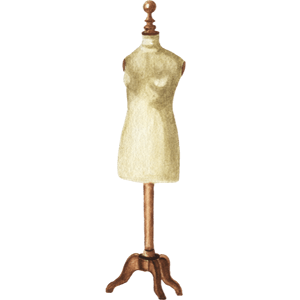
No matter which niche you choose, one golden rule remains: quality materials lead to quality output.
Sourcing your fabric and haberdashery needs from reputable suppliers ensures your products look professional and last long, which in turn makes clients happy. Australia offers a range of supplier options:
Major Retailers (Spotlight, Lincraft):
These are found in many Australian cities and are a convenient one-stop for fabric, notions, and even sewing machines.
They are great for basics – you can get threads, zippers, interfacing, buttons, elastic, and a decent selection of fabrics from apparel fabrics to special occasion materials.
They often have sales (e.g. 40% off all fabric, or thread packs on discount) which can be a good time to stock up.
The downside is some fabrics might be a bit generic or seasonal, and prices on certain imported fabrics can be high if not on sale. However, for a startup, they’re accessible and you can hand-pick your materials.
Independent Fabric Stores:
Most capital cities have long-standing fabric shops that cater to dressmakers and designers.
These might include high-end importers (selling silks, wools, etc.), discount fabric outlets (with end-of-roll deals), or specialty shops (like quilting cotton stores, bridal fabric boutiques, etc.).
Examples: Tessuti Fabrics (Sydney/Melbourne) as mentioned, The Fabric Store (which has a location in Sydney, Melbourne, Brisbane and specializes in natural fibres, linen, merino, etc.), or local shops like East Coast Fabrics in QLD, Homecraft Textiles in WA, etc.
Shopping in person lets you feel the fabric quality – important for making sure, say, that satin isn’t too flimsy or that cotton isn’t too rough for kids. Build a rapport with store staff – they often give great advice and might offer business customers a discount or wholesale rate if you buy larger quantities.
Online Suppliers and Marketplaces:
There are Australian online marketplaces like Fabric Muse, Super Cheap Fabrics (online), Minerva (though UK-based, it ships to Australia and has a huge range), etc.
Also, consider Etsy for unique hand-dyed or printed fabrics (some Aussie sellers do small batch prints).
For haberdashery, sites like eBay Australia or Amazon AU can be sources for bulk buys (like a box of 100 zippers or snap sets) often at cheaper rates than retail – just ensure the quality by reading reviews or testing a small batch first.
Wholesalers:
If you progress to needing larger quantities, look at wholesalers.
Companies like Kennard & Kennard (Australian wholesale fabric distributors) or Nolan Textiles supply fabrics to businesses.
Some wholesalers have minimum order requirements (like buying a whole roll), so it may be something to use when you’re confident about a fabric choice.
For notions, there are wholesalers who sell things like thread by the box or elastic in bulk reels – this can significantly cut down your cost per item.
Buying wholesale typically requires an ABN and sometimes a business account setup, but as a small business owner you can certainly get those.
Local TAFE or Sewing Groups:
This might sound unusual as a supplier, but sometimes fashion design schools or community sewing groups bulk order supplies and might sell off surplus cheap to members.
If you network in the local sewing community, you might hear about someone selling an unused roll of fabric or a second-hand machine. Keep your ears open!
Also, consider sustainability: sourcing locally not only supports Aussie businesses, it can reduce shipping costs and times. It also gives you bragging rights for marketing (Australian-sourced materials). And if you ever need something urgently, a local supplier is a lifesaver. One sewing business blogger noted that having a supplier who is keen to work with you means you have a real person to contact for questions or special requests – that kind of relationship is more likely when dealing with smaller Aussie businesses than distant overseas factories.
Equipment suppliers:
For machines and maintenance, build a relationship with your local sewing machine dealer. They’ll help with servicing your machine and might offer trade-ups or deals.
In Australia, dealers like Echidna Sewing (who also do embroidery machines) or brands’ own dealerships (Janome, Bernina etc.) are good contacts.
If a new industrial machine is out of reach, there are services to rent machines – for example, Rent a Sew in Melbourne rents industrial sewing machines from about $45 per week (and domestics around $40/wk.
This could be a great interim solution if you need an industrial machine for a specific project or to test before buying.
Overcoming Challenges in your Sewing Niche
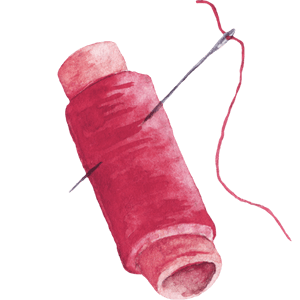
No business is without its hurdles. Here are some common challenges sewing entrepreneurs face and suggestions to overcome them:
Limited Market Size:
By choosing a niche, you inherently narrow your potential customer base.
To ensure you have enough demand, do some homework on how big your niche market is in Australia.
For example, if you want to specialise in plus-size bridal, research how many brides might seek that service and how many competitors exist.
If your local area is small, consider an online or mail-in service to widen your reach (some alteration specialists accept postal alterations, for instance).
Also, differentiate within your niche – offer something unique that draws people even from outside your immediate city.
Expanding your online presence (through a website with good SEO and perhaps offering virtual consultations) can help you reach niche customers across Australia, not just in your town.
Skill Gap or Need for Training:
You might be very good at general sewing but less experienced in the specialized techniques your niche demands.
A bridal specialist needs to know about corset construction, a children’s wear maker should know about safety standards, an alterations expert might need advanced tailoring techniques.
Invest in your skills – consider short courses or workshops. Australia has TAFE courses in fashion tech and plenty of online classes these days (Craftsy, Skillshare, etc.).
You can even seek out a mentor – perhaps intern a few hours a week with a local tailor or designer.
The more you learn, the more confident and efficient you’ll be, which directly impacts the success of your business.
Time Management and Scaling:
Especially when you’re a one-person operation, managing time is tricky.
It’s easy to underestimate how long a project will take. Always buffer extra time for each project until you have a good sense of your pace.
Use tools – even simple spreadsheets or a planner – to track orders and deadlines.
As you grow, consider what tasks you might outsource or streamline.
Maybe bookkeeping can be done by an app or accountant so you spend more time sewing.
Or perhaps cutting fabric for multiple orders at once (batch processing) can save time.
If you get too many orders to handle, it could be time to either raise prices (to select for the best projects) or bring in help.
Hiring even a casual assistant or contracting out some sewing (say, hiring another seamstress for piecework) can increase your output.
It’s a big step, but remember, many fashion businesses start with the founder sewing and then transition to a small team or factory as demand grows.
Financial Juggling:
In the beginning, you might have irregular income – one month a big bridal deposit, next month a slow trickle.
Keep a close eye on finances. List out all your startup costs and ongoing expenses (materials, machine maintenance, marketing, etc.).
Make a business plan or at least a budget. This helps in setting the right prices too; you’ll know your break-even point.
Don’t price too low just to get business – that can lead to burnout and doesn’t necessarily attract loyal customers.
It’s better to compete on quality and uniqueness than on being the cheapest.
Also, be mindful of deposits and payment schedules – for big projects, take a deposit (e.g. 30-50% upfront) so you’re not out-of-pocket on materials and to secure commitment from the client.
Many sewing businesses have faltered by not charging for all the little costs – thread, travel to buy materials, packaging – but those add up. Factor them in.
Building a Client Base:
At first, you might wonder how to get clients beyond friends and family. This is where your marketing efforts and networking are crucial.
Take advantage of free/low-cost marketing: social media (regular posts showcasing your work, behind-the-scenes of your process, testimonials from happy customers), local community boards (sometimes libraries, cafes or community centres let you put a flyer up), and word-of-mouth.
Encourage satisfied customers to leave reviews on your Facebook page or Google listing (if you have one), or simply to tell others.
Possibly offer a referral discount: “Refer a friend and get 10% off your next order.”
Additionally, leverage Australian online communities – there are Facebook groups for local handmade businesses, or even something like the Airtasker platform, where people sometimes seek custom sewing services (just be cautious to price well on those platforms).
Over time, as your portfolio and reputation grow, getting clients becomes easier – the first year or two is usually the hardest hustle.
Emotional and Creative Burnout:
When you turn your hobby into a business, there’s a risk of burnout.
What used to be a relaxing pastime is now tied to deadlines and customer expectations.
Make sure to keep some projects or time for yourself – maybe block out a weekend to experiment with a fun project that isn’t for a client, to rekindle your joy.
Also, connect with peers – join a sewing business forum or local sewing group. Sharing experiences can alleviate stress; you’ll realise others face the same challenges and you can swap solutions.
If dealing with difficult clients is draining you, develop some policies (like how to handle revisions or cancellations) to protect your sanity.
At the end of the day, remember why you started this – love of sewing and a desire for a creative business. Keep sight of that passion, and don’t be afraid to adjust your business model if something isn’t working for you (for example, if doing both bridal and alterations is too much, it’s okay to narrow your services to what you enjoy most or what is most profitable).
Pricing, Client Expectations, and Branding - Getting it Right
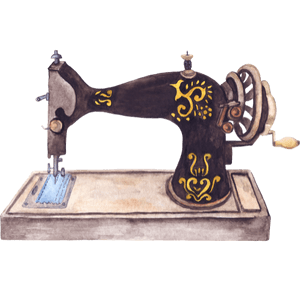
We’ve touched on these aspects within each niche, but let’s recap some overarching principles for pricing your services, managing client expectations, and building your brand:
Realistic Pricing:
It cannot be stressed enough – price your work to sustain your business.
A common mistake for new entrepreneurs is under-pricing, either out of fear that clients won’t pay more, or underestimating the time involved.
To set your prices, calculate the cost of materials per item/project, estimate your hours of labour (and set an hourly rate for yourself that you feel is fair for your skill – at minimum above the standard minimum wage; many skilled sewists charge anywhere from $25 to $60+ per hour depending on the complexity), and add a margin for business overheads (electricity, machine wear-and-tear, marketing costs) and profit.
Also consider value-based pricing – if your service is unique or urgent, you can charge more for that value.
For example, express alterations done in 24 hours could have a surcharge.
Or a bridal dress with extremely intricate hand-beading is a luxury service – price it like one.
Always communicate quotes before starting work so the client is on the same page.
It’s helpful to provide a written quote or invoice that outlines what they’re paying for (e.g. materials, labour, any extras) – it makes your pricing more transparent and professional.
Remember the advice: if a potential customer balks at your price (when you know it’s reasonable and in line with your market), they might not be your target customer.
Focus on those who do value your work.
Managing Client Expectations:
Clear, honest communication is your best tool here.
From the get-go, let clients know what is possible and what isn’t.
If a bride comes with a picture of a $15,000 designer gown but has a $2,000 budget, kindly explain the constraints and perhaps suggest modifications to achieve a similar feel within her budget.
If a client wants a pile of alterations done “by tomorrow”, explain your timeline and maybe offer it at a rush fee if you’re willing.
Set boundaries: for instance, your business hours or days for fittings so clients don’t expect you to be available 24/7.
When you take on a project, outline the process for them: “I’ll source materials next week, have a first fitting by this date, and final completion by that date.”
Clients, especially those not familiar with custom sewing, may not understand how much work goes into it – a bit of education can help them appreciate the value and timing.
It’s also wise to have a policy for redos or adjustments: e.g., you’ll do one round of minor adjustments included in the price, but significant design changes after initial agreement would cost extra. Put this politely in your agreement or email confirmations.
Always stay courteous and professional, even if a client is challenging – how you handle a tough situation can often turn them into a loyal supporter if they feel you listened and did your best to meet their needs.
Building a Cohesive Brand:
Your brand is more than just a logo – it’s the impression people have of your business.
It encompasses your business name, visual identity, the tone of voice you use in communications, the look of your work, and customer experience.
For a sewing business, especially one that’s niche-focused, make sure your branding aligns with your niche.
If you’re a bridal seamstress, your branding (from your website design to the way you package a finished gown) should evoke elegance and trustworthiness.
If you run a funky children’s clothing line, your brand might be colourful and whimsical, appealing to kids and parents alike.
Consistency is key: use the same brand name, tagline, and colours across your website, social media, and printed materials (like business cards).
If you’re not design-savvy, there are many templates and tools (like Canva) to help create a decent logo and graphics.
Also, consider branding through storytelling – share your “why.”
Perhaps you could include an “About Me” on your site where you talk about how your grandmother taught you to sew or how you left a corporate job to pursue this passion.
People love authentic stories, and it makes your brand relatable and memorable.
When it comes to branding in person, little details count too – for example, if you have a studio or shop, the décor and ambiance should reflect your brand style (cosy and crafty, or sleek and modern, etc.).
f you’re home-based and have clients visit for fittings, ensure the space is tidy and reflective of professionalism so it reinforces confidence in your brand.
Don’t forget to brand your products and packaging: use those custom labels with your business name on every garment you make.
If you deliver items, maybe include a thank you note with branding, or wrap the product in tissue paper with a logo sticker. These touches make your service feel polished and worth the cost.
Localising Your Brand (Australian context):
Since your target audience is Australian, leverage that in your branding if it makes sense.
Many customers here appreciate locally made goods, so proudly state “Australian Made” or use the Australian Made logo if eligible.
You can also use Australian cultural elements subtly – for instance, a bridal business might highlight being familiar with Australian venues/climates (like “we make dresses perfect for beach weddings or outback weddings alike”), or a kids’ brand might use native animals in its designs.
Use Aussie spelling and lingo appropriately (e.g. use “Mum” not “Mom” if writing content, etc., to resonate locally).
Show that you understand the Australian lifestyle – e.g., resort wear that handles the Aussie sun, or corporate wear that’s breathable for our summer.
This can all set you apart from generic international competition.
Conclusion: Focused Path, Bright Future
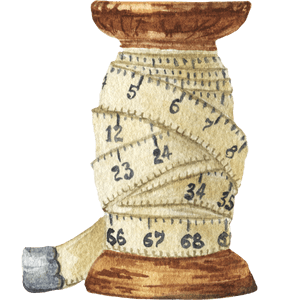
In the journey of building a successful sewing business, specialisation can be your best friend.
By choosing a niche – whether it’s becoming the sought-after bridal gown guru, the reliable neighbourhood alterations expert, a bespoke fashion designer, or the creator of adorable children’s outfits – you’re giving your business a clear identity and purpose.
You’ve learned how specialisation offers distinct advantages: it helps sharpen your skills, differentiate your brand, streamline operations, and potentially charge premium prices for your expertise.
We’ve explored several niches common in the Australian sewing industry, each with its own set of requirements and rewards, from the tools you’ll need to the typical client expectations.
Remember that startup costs can be managed smartly: invest in quality equipment (perhaps gradually or even through rentals), source materials savvily (supporting local Australian suppliers where possible), and always keep an eye on the balance sheet.
We’ve also discussed how to tackle challenges – with planning, continual learning, and a supportive network, no hurdle is too big.
Most importantly, we’ve emphasized pricing your work fairly (both to you and the client), setting honest expectations, and building a brand that speaks to your target market.
Starting a sewing business in Australia is as much about passion as it is about planning. With a focused path, you can become not just another seamstress or designer, but the go-to person for your chosen niche.
As you conclude this guide and perhaps feel inspired to take the next step, remember to stay friendly, informative, and supportive in your approach – much like the tone of this article.
The sewing community is a welcoming one, and there’s plenty of room for new entrepreneurs who bring their unique flair to the table. So go ahead and explore that focused path.
Research your niche, make a plan, and dive in. Your future customers are out there looking for exactly what you have to offer – and with the insights you’ve gathered, you’re well on your way to stitching up a thriving, niche-savvy sewing business.
Happy sewing and best of luck on your entrepreneurial journey!
